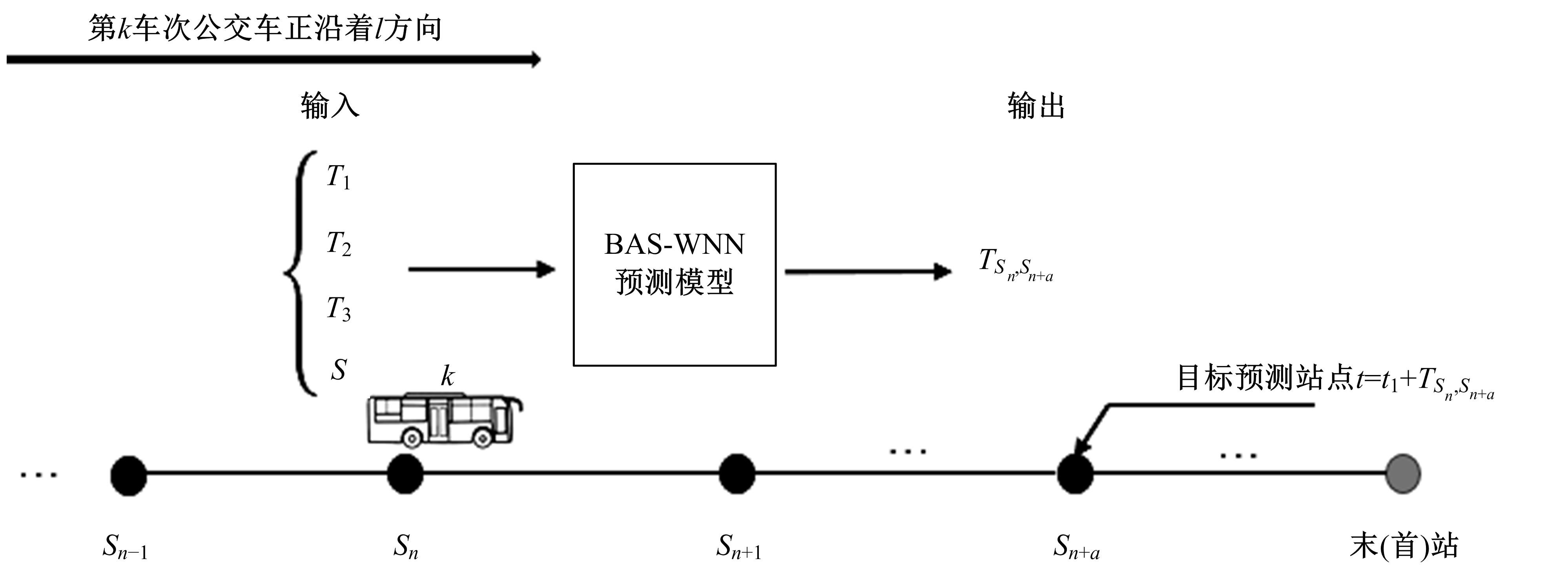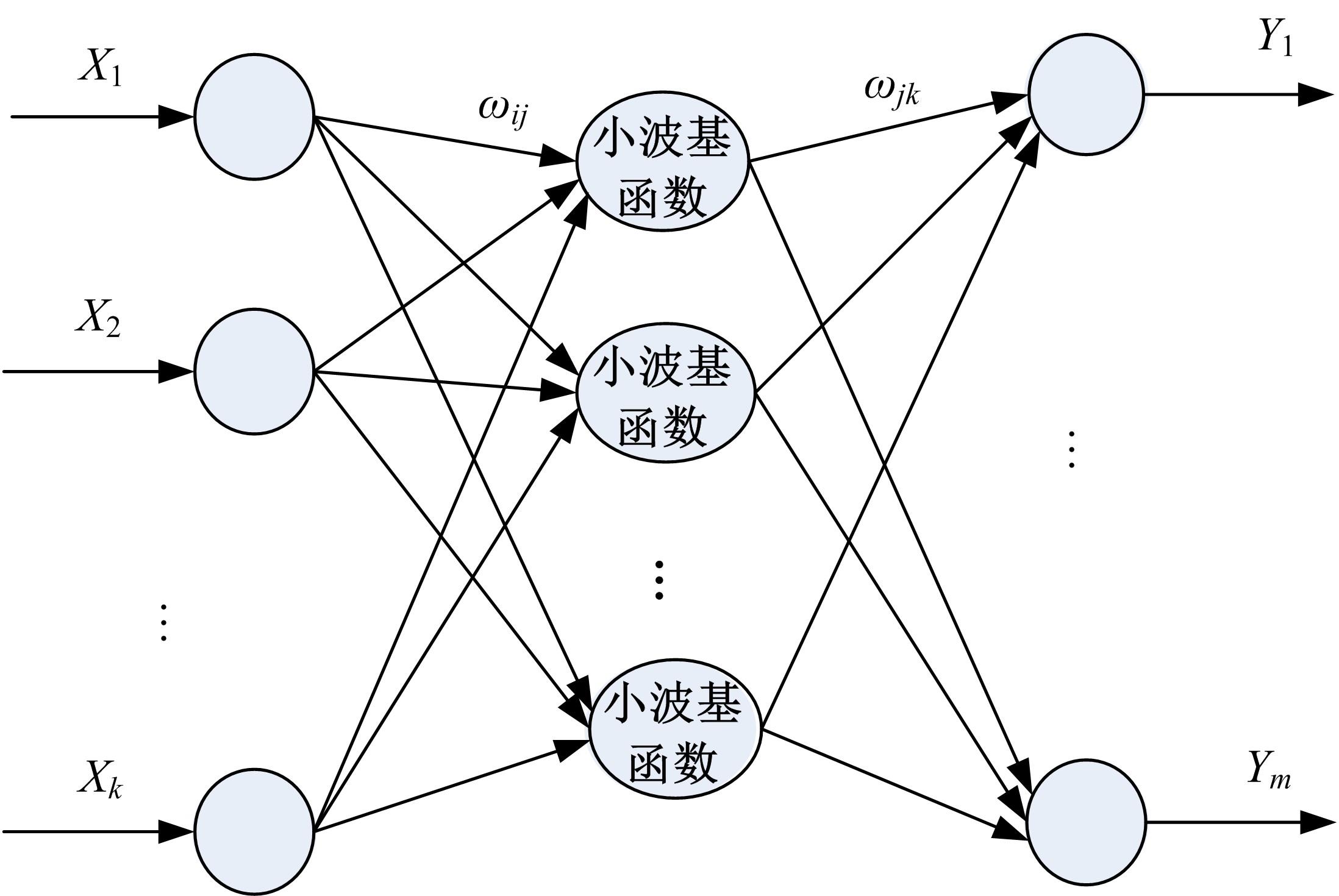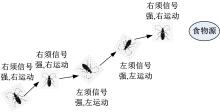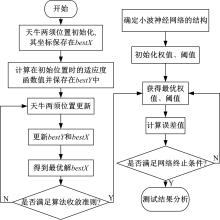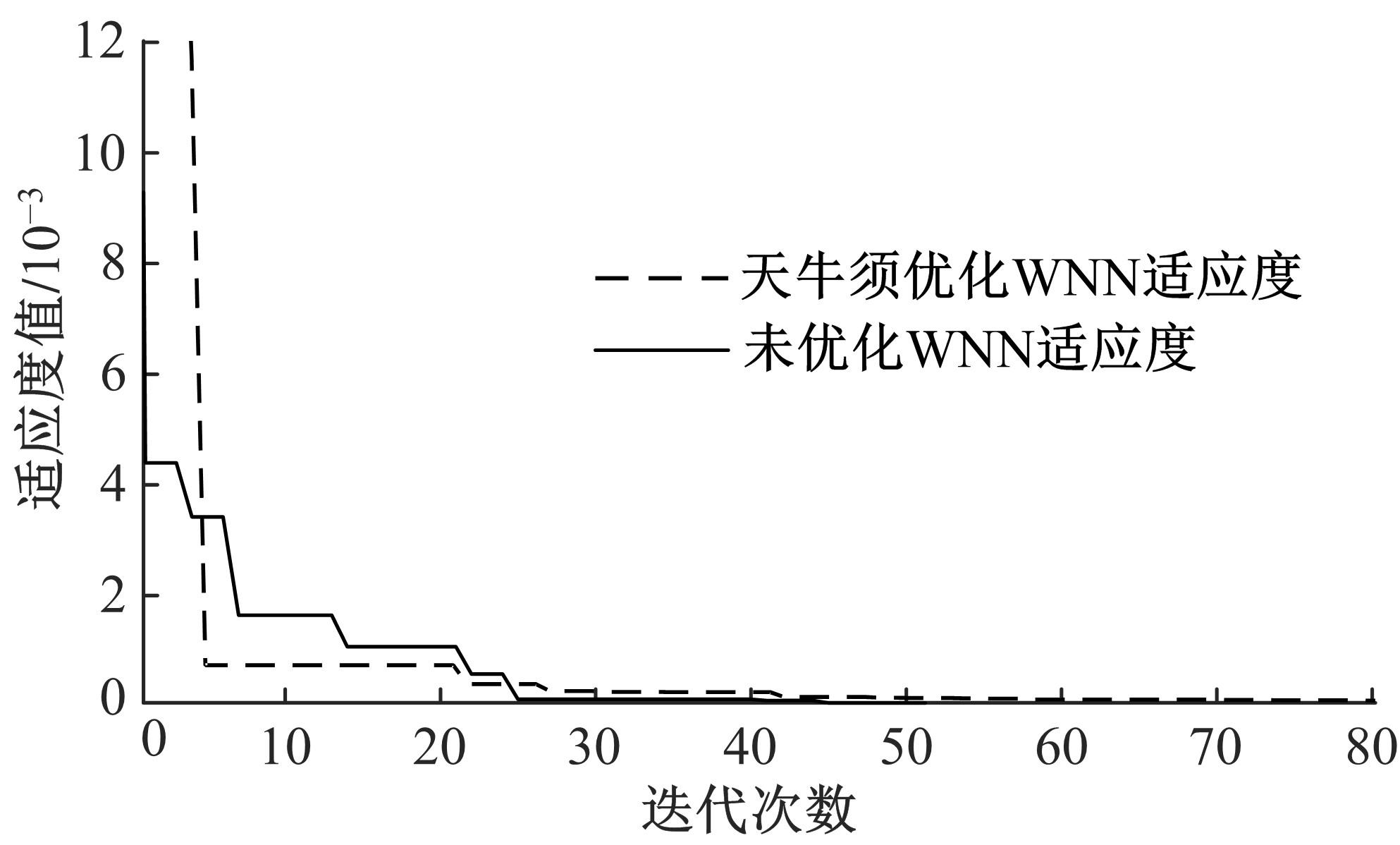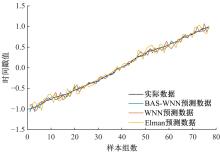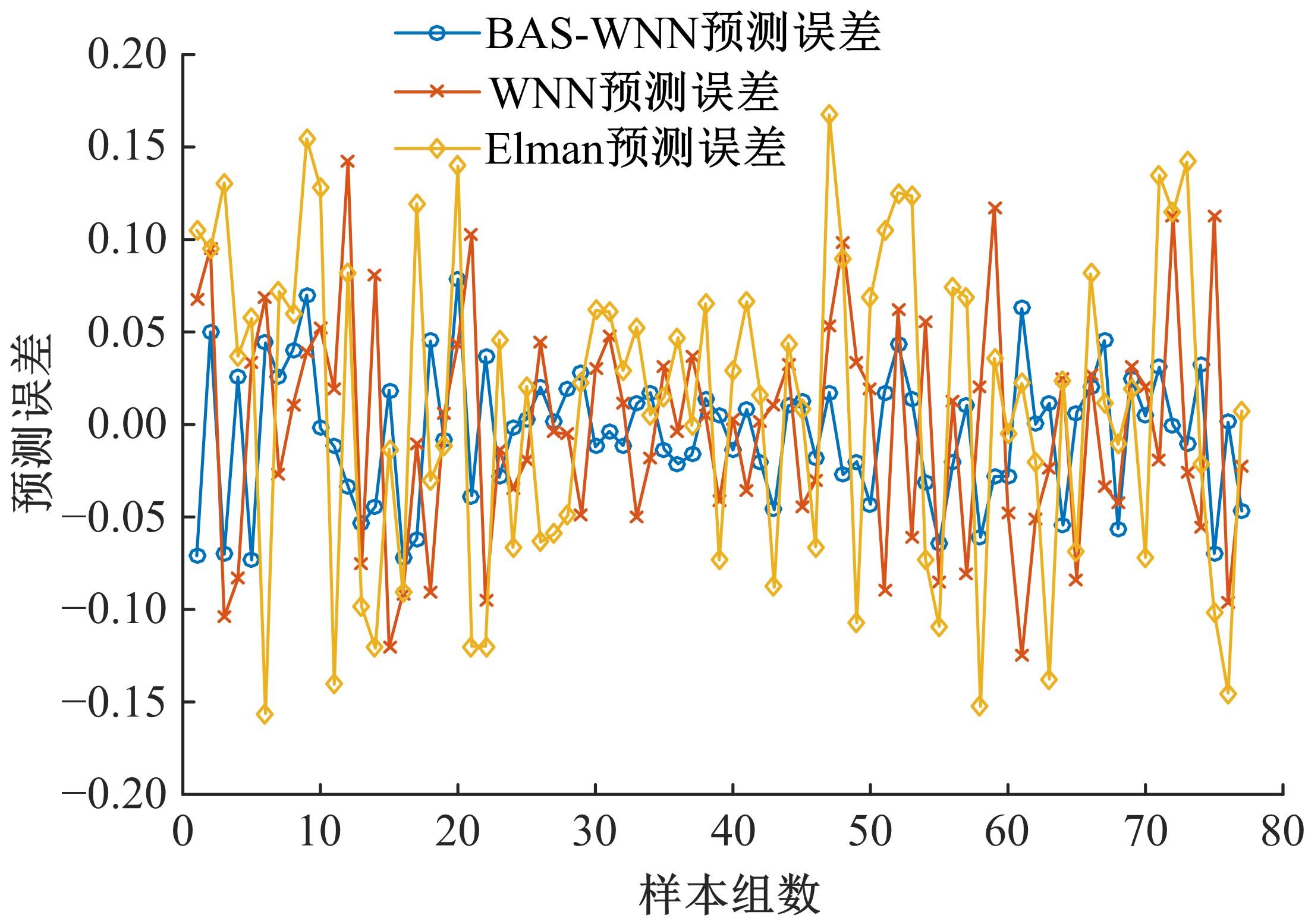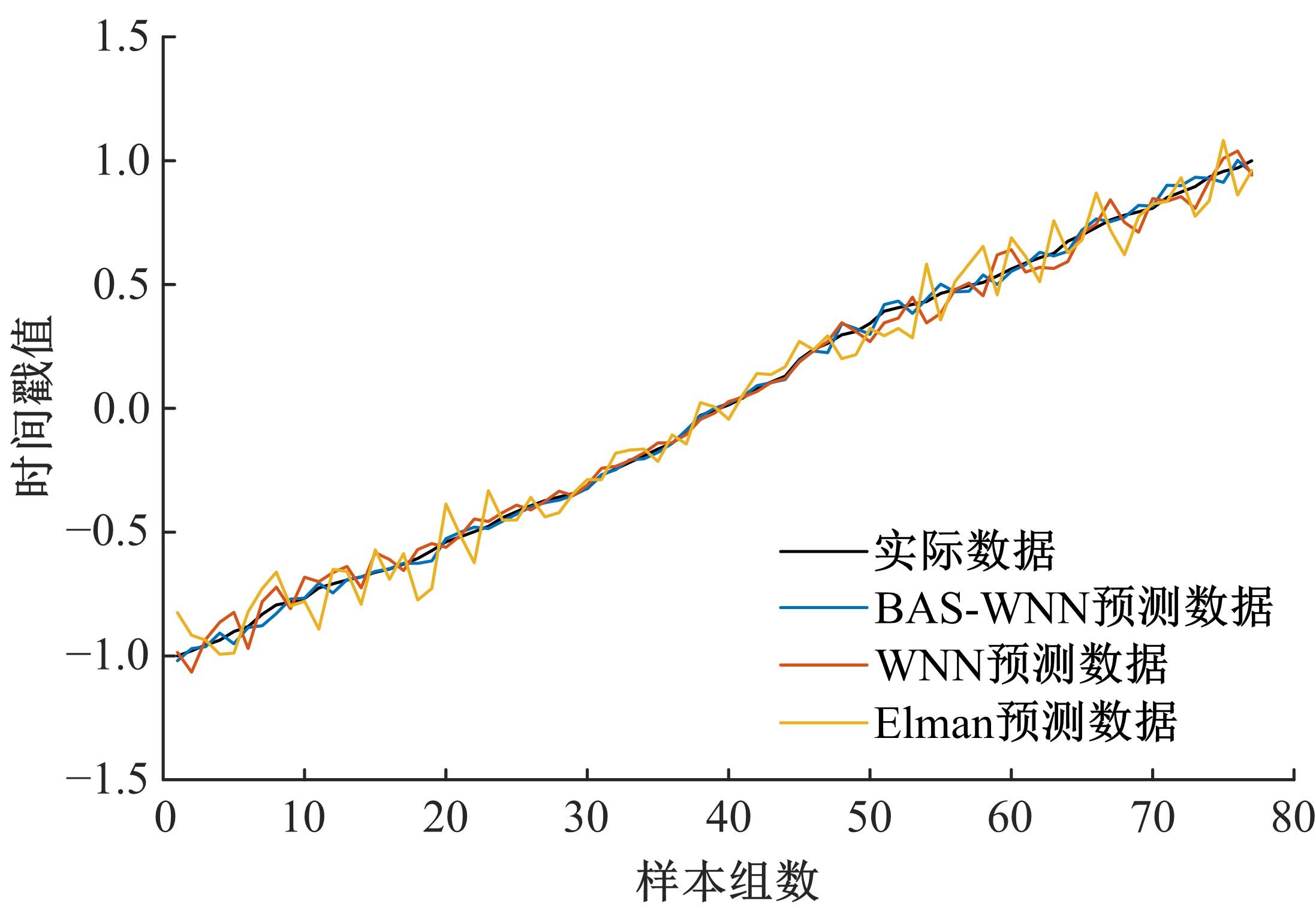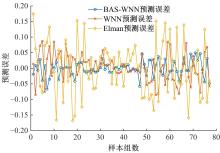吉林大学学报(工学版) ›› 2022, Vol. 52 ›› Issue (1): 110-117.doi: 10.13229/j.cnki.jdxbgxb20191042
• 交通运输工程·土木工程 • 上一篇
基于天牛须小波神经网络的公交到站时间预测
- 江西理工大学 电气工程与自动化学院,江西 赣州 341000
Bus arrival time prediction based on wavelet neural network optimized by Beetle Antennae Search
Xian-yan KUANG( ),Hui-chao LUO,Rui ZHONG,Peng OUYANG
),Hui-chao LUO,Rui ZHONG,Peng OUYANG
- School of Electrical Engineering and Automation,Jiangxi University of Science and Technology,Ganzhou 341000,China
摘要:
通过对公交运行环境的实际分析,考虑工作日和非工作日的运行特性差异,提出了一种基于天牛须搜索算法的小波神经网络(BAS-WNN)公交到站时间预测模型。该模型利用寻优性能更强的天牛须搜索算法优化WNN的初始参数,使得WNN对时间序列的预测具有更好的性能。最后,利用行车历史数据对神经网络进行训练和建模来实现到站时间的准确预测,将该优化算法与传统的WNN算法和Elman神经网络算法用MATLAB分别仿真测试,对比结果显示,无论工作日还是非工作日,BAS-WNN预测模型对公交到站时间的预测均具有更高的准确性且结果更加稳定。
中图分类号:
- U491
| 1 | Cruz Pedro, Rodrigo S,Couto H, et al. An algorithm for sink positioning in bus-assisted smart city sensing [J]. Future Generation Computer Systems, 2019, 93(4): 761-769. |
| 2 | Lin Y, Yang X, Zou N, et al. Real-time bus arrival time prediction: case study for Jinan, China [J]. Journal of Transportation Engineering, 2013, 139(11): 1133-1140. |
| 3 | Jeong R, Rilett L. Bus arrival time prediction using artificial neural network model[C]∥IEEE Intelligent Transportation Systems Conference, Washington DC, USA, 2004:988-993. |
| 4 | 汪磊,左忠义.基于 MLR 的公交车行程时间预测模型[J].大连交通大学学报, 2015, 36(2):1-5. |
| Wang Lei, Zuo Zhong-yi. Bus travel time prediction based on MLR [J]. Journal of Dalian Jiaotong University, 2015, 36(2):1-5. | |
| 5 | Shalaby A, Farhan A. Bus travel time prediction model for dynamic operations control and passenger information systems[C]∥The 82nd Annual Meeting of the Transportation Research Board, Washington DC,USA, 2003. |
| 6 | 于滨,杨忠振,曾庆成.基于SVM和Kalman滤波的公交车到站时间预测模型[J].中国公路学报,2008(2):89-92, 97. |
| Yu Bin, Yang Zhong-zhen, Zeng Qing-cheng. A bus arrival time prediction model based on SVM and Kalman filter[J]. China Journal of Highway and Transport,2008(2):89-92, 97. | |
| 7 | 季彦婕, 陆佳炜, 陈晓实, 等. 基于粒子群小波神经网络的公交到站时间预测[J]. 交通运输系统工程与信息, 2016, 16(3):60-66. |
| Ji Yan-jie, Lu Jia-wei, Chen Xiao-shi, et al. Bus-to-station time prediction based on particle swarm wavelet neural network[J]. Journal of Transportation Systems Engineering and Information Technology, 2016, 16(3): 60-66. | |
| 8 | Yu H, Wu Z, Chen D, et al. Probabilistic prediction of bus headway using relevance vector machine regression[J]. IEEE Transactions on Intelligent Transportation Systems, 2017, 18(7):1772-1781. |
| 9 | 李华民, 吴俊美, 孙棣华, 等. 基于RFID电子车牌数据的公交行程时间预测方法[J]. 中国公路学报, 2019, 32(8):165-173, 182. |
| Li Hua-min, Wu Jun-mei, Sun Di-hua, et al. Bus travel time prediction method based on RFID electronic license plate data[J]. China Journal of Highway and Transport, 2019, 32(8): 165-173, 182. | |
| 10 | 刘迎, 过秀成, 周润瑄, 等. 基于多源数据融合的干线公交车辆行程时间预测[J]. 交通运输系统工程与信息, 2019(4):124-129. |
| Liu Ying, Guo Xiu-cheng, Zhou Run-xuan, et al. Trunk bus travel time prediction based on multi-source data fusion[J]. Transportation Systems Engineering and Information, 2019(4):124-129. | |
| 11 | 季彦婕,陈晓实,王炜,等.基于小波变换和粒子群小波神经网络组合模型的有效停车泊位短时预测[J]. 吉林大学学报:工学版,2016,46(2):399-405. |
| Ji Yan-jie, Chen Xiao-shi, Wang Wei, et al. Short-term prediction of effective parking berth based on wavelet transform and particle swarm wavelet neural network combined model[J]. Journal of Jilin University (Engineering and Technology Edition), 2016,46(2):399-405. | |
| 12 | Pauline Ong, Zarita Zainuddin. Optimizing wavelet neural networks using modified cuckoo search for multi-step ahead chaotic time series prediction [J]. Applied Soft Computing, 2019, 80: 374-386. |
| 13 | Jiang X Y, Li S. BAS: beetle antennae search algorithm for optimization problems [DB/OL].[2017-11-22]. . |
| 14 | Jiang X Y, Li S. Beetle antennae search without parameter tuning (BAS-WPT) for multi-objective optimization [DB/OL].[2017-11-22]. . |
| [1] | 张健,吴坤润,杨敏,冉斌. 智能网联环境下交叉口双环自适应控制模型[J]. 吉林大学学报(工学版), 2021, 51(2): 541-548. |
| [2] | 张文会,秦佳琪,李洪涛,邓红星,程国柱. 考虑拥挤度的常规公交与地铁出行方式选择模型[J]. 吉林大学学报(工学版), 2021, 51(1): 200-205. |
| [3] | 赵宏伟, 刘宇琦, 董立岩, 王玉, 刘陪. 智能交通混合动态路径优化算法[J]. 吉林大学学报(工学版), 2018, 48(4): 1214-1223. |
| [4] | 潘述亮, 卢小林, 邹难. 灵活型接驳公交路径优化及协同调度模型[J]. 吉林大学学报(工学版), 2016, 46(6): 1827-1835. |
| [5] | 姜桂艳, 刘彬, 隋晓艳, 马明芳. 基于IC卡收费系统的公交客流信息实时采集方法[J]. 吉林大学学报(工学版), 2016, 46(4): 1076-1082. |
| [6] | 季彦婕, 陈晓实, 王炜, 胡波. 基于小波变换和粒子群小波神经网络组合模型的有效停车泊位短时预测[J]. 吉林大学学报(工学版), 2016, 46(2): 399-405. |
| [7] | 潘义勇, 马健霄, 孙璐. 基于可靠度的动态随机交通网络耗时最优路径[J]. 吉林大学学报(工学版), 2016, 46(2): 412-417. |
| [8] | 潘义勇, 孙璐. 随机交通网络环境下自适应最可靠路径问题[J]. 吉林大学学报(工学版), 2014, 44(6): 1622-1627. |
| [9] | 高强, 付超, 王健, 刘衍珩, 邓伟文. 车辆主动式交叉路口调度模型[J]. 吉林大学学报(工学版), 2013, 43(06): 1638-1643. |
| [10] | 赵莹莹, 曲昭伟, 江晟, 胡宏宇, 胡金辉. 基于视频的行人过街速度特性[J]. 吉林大学学报(工学版), 2013, 43(02): 298-303. |
| [11] | 孙锋, 王殿海, 胡宏宇, 马东方. 基于出行时间分析的公交跳站运行方案优化[J]. 吉林大学学报(工学版), 2012, 42(增刊1): 179-183. |
| [12] | 王振报, 陈艳艳, 韩冬. 城市客运交通枢纽建设时序优化方法[J]. , 2012, 42(04): 899-903. |
| [13] | 杨兆升,孙晓梅,孙鹏程. 非常态事件下应急车辆单点信号优先控制策略及实现方法[J]. 吉林大学学报(工学版), 2011, 41(03): 640-644. |
| [14] | 李娟,邵春福,杨励雅. 基于混合高斯模型的行人检测方法[J]. 吉林大学学报(工学版), 2011, 41(01): 41-0045. |
| [15] | 刘昕, 宋现敏, 王喆, 王殿海, 王德民. 基于AAA的智能交通运营模式设计[J]. 吉林大学学报(工学版), 2010, 40(增刊): 189-0194. |
|
||

